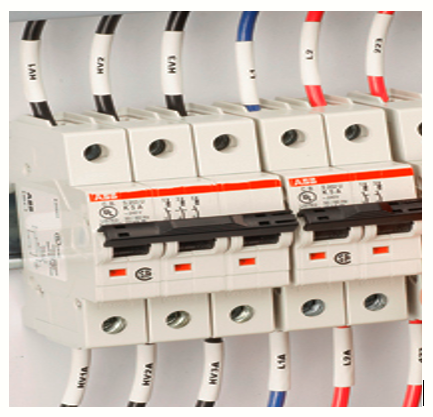Circuit breakers and Fuses are safety devices that protect the electrical system from short circuits and overloads. These are placed in the main service panel and in subpanels. Tips to install circuit breaker are:
How circuit breakers work
How circuit breakers work
Each circuit breaker has a permanent metal strip that heats up and bends when current passes through it. When a circuit is overloaded, the metal strip inside the breaker crooks enough to “trip” the switch and stop the flow of power. Usually, a Circuit breaker to trip twice. After the second trip they weaken and tend to bother trip at lower currents. It is therefore recommended to replace breakers that have tripped up more than twice
Installing circuit breakers
Usually, the last step of your wiring should be installation of circuit breakers.
Before going ahead remember
Shut power supply off
Ensure the circuit breaker grading does not exceed the capacity of the circuit wires you are connecting to it. You should install AFCI circuit breakers for most 15- and 20-amp, 120-volt circuits inside the home.
Use authentic circuit breakers.
Tools required to install circuit breakers
Pliers
Cable clamps Single- and double-pole
AFCI circuit breakers
Screwdriver
Hammer
Pencil
Combination tool
Cable ripper
Circuit tester
Tips to install circuit breaker
Shut down main power/circuit breaker
Step 1
Shut down main power supply and test it after shutting it down whether it is properly shut off or not.
Step 2
Step 2
Open a knockout in the side of the circuit breaker panel using a screwdriver and hammer. Fasten a cable clamp to the knockout.
Step 3
Clench the cable across the forward-facing of the panel near the knockout, and mark the casing of cable about 1 ⁄2″ inside the edge of the panel. Ribbon the cable from the marked line to the end using a cable ripper. Insert the cable through the clamp and into the service panel, and then make tighter the clamp.
Step 4
Curve the naked copper grounding wire around the inside edge of the panel to an open set screw terminal on the grounding bus bar. Inset the wire into the opening on the bus bar, and make tighter the set screw. Bend additional wire round the inside edge of the panel.
Step 5
Curve the white circuit wire round the external of the panel to an open set screw terminal on the neutral bus bar for 120-volt circuits. Then Inset the wire into the opening on the bus bar, and make tighter the set screw. Bend additional wire round the inside edge of the panel.
Step 6
Ribbon 1⁄2″ of padding from the end of the black circuit wire. Supplement the wire into the set screw terminal on a new single-pole circuit breaker, and tighten the set screw.
Step 7
Glide one end of the circuit breaker onto the conductor hook, and then press it firmly against the bus bar until it snaps into place.
Step 8
This is very important step while installing the circuit breakers. Above steps are actually labour work. And this is technical work.
For 102 –volt , Connect red and black wires to the double-pole breaker.
Connect white wire to the neutral bus bar, and the grounding wire to grounding bus bar.
For 240-volt circuits attach white and black wires to the double-pole breaker, tagging white wire with black tape.
How to Reset a Circuit Breaker?
By pressing the circuit breaker lever all the way to the OFF position and then pressing it to the ON position.
Please follow Safety tips for wiring electricity while Installing circuit breakers
